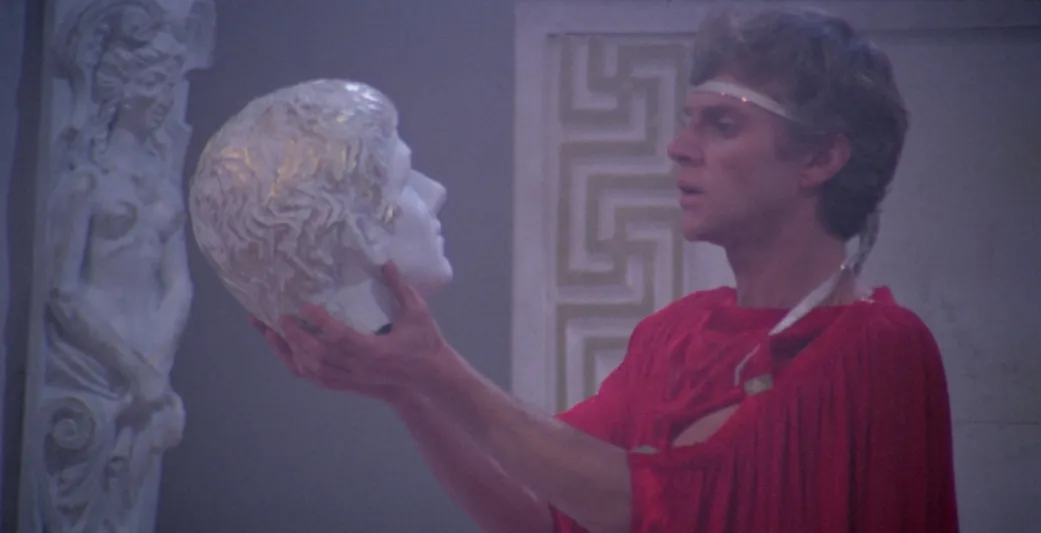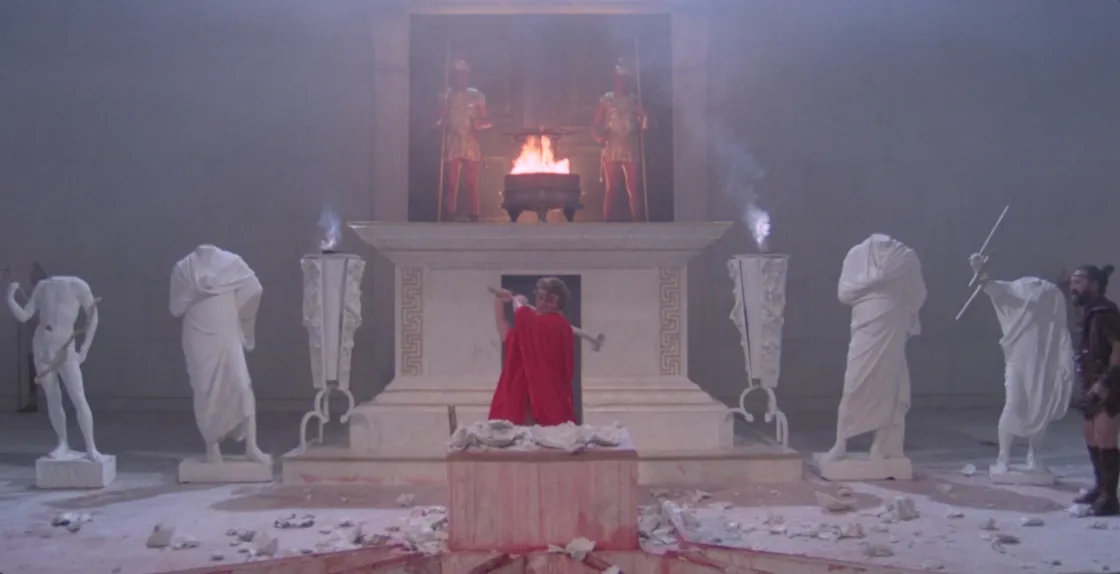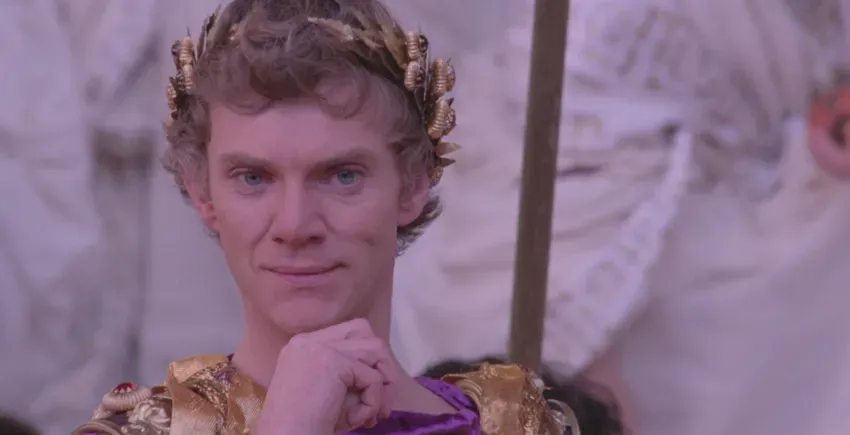Masterminded by Penthouse doyen Bob Guccione, written by internationally renowned Gay scribe Gore Vidal, and directed by sexploitationist Tinto Brass, 1980's Caligula rapidly became the most expensive independent production in cinema history. A lurid tale of the Roman Empire's third emperor under the Julio-Claudian dynasty, the epic story tracks Caligula (Malcolm McDowell) from lusting after his sister Drusilla (Teresa Ann Savoy), to taking the throne after the killing of his stepfather Tiberius (Peter O'Toole), to then plunging the entire empire into debauchery alongside his queen, Caesonia (Helen Mirren).
Recut by Guccione with extensive hardcore porn inserts, Caligula was subsequently disowned by Brass. Producer Thomas Negovan worked to restore the original concept for a new DVD, Blu-ray, and 4K version. Below are edited excerpts from an interview:
Andrew Hamlin: According to Wikipedia at least, the director worked to make the film considerably less Gay than it originally was. But I watched both versions, and it's still a remarkably Gay film, with cocks and balls hanging out all over the place.
Thomas Negovan: Surprisingly, considering we're talking about Bob Guccione, I think that Gore's version was more sexual. It leaned far, far more into homosexual than neutral. Gore was a writer on Ben-Hur and had written that the two leads had a romantic interest. That's something he felt strongly about, and he wanted to suggest that Caligula and Macro [Guido Mannari] were in love.
That is something Tinto and Bob really tried to diminish; that was something that the editor [Aaron Shaps] and I tried really hard to put back in. The thing that we tried to do was emphasize that there was this romance between the two male leads, and that's more the kind of thing that Gore was hoping would happen. By the end of the day, you had Bob Guccione flying in Penthouse Pets [for the hardcore sex scenes], trying to make sure there were as many naked women as possible.
It's still a very, very nude film. It made it difficult to pull stills for promotion, because you would take a still shot and then say, "Oh, I didn't even notice there were nine dicks in the background." [laughs]. They're everywhere. But Gore's idea was a far more mature way of looking at it. For him, the homosexuality wasn't a Gay sex thing; it was the idea that there were men having meaningful relationships, not being marginalized.

AH: Did you have access to Vidal's original script?
TN: I did. You'll laugh at this: ...Gore Vidal ... had imagined a very austere version of Rome. So when he showed up on set and saw all of the bright colors, he was furious, returned to America, and started telling reporters that "Caligula is gonna look like the lobby of a hotel in Miami Beach." And Tinto was so furious, he said, "If Gore doesn't shut his mouth, I'm gonna publish his script."
I remember reading this cat-fight and thinking, "But Gore Vidal is one of the greatest writers of the century. What could it possibly be?" The thing we learned as we got into it was that Gore wrote a very two-dimensional version, of Caligula. So what happened is that Malcolm McDowell and a playwright named Ted Whitehead started working with Tinto to reconstruct the actual storyline of Caligula's performance. So the idea in the first third [is] that he's kind of a scared boy, in the second he becomes this beast with power, and then in the third starts having some existential crisis as he comes completely unmoored, eventually coming to terms with the cycle of fate. None of that is in Gore's script, interestingly. Those were things that were primarily driven by Malcolm McDowell.
You'll also laugh: when I was watching the 1980 version for the first time, I had multiple versions of the script with me, and I completely had to put them down, because the 1980 version so thoroughly didn't follow any of the scripts. So the thing used as the backbone was the shooting script, which had been heavily adapted by Malcolm and by Tinto.
It's a fable. If you watch this like you're watching an old history movie, it's gonna be confusing. There's decapitation machines, elevators, and platform heels. You have to watch it like modern opera. I think people should look at it more through the lens of opera.
AH: I should point out by the way – feel free to correct me if I'm wrong – that Malcolm McDowell's actual junk isn't visible in the Ultimate Cut but visible in the other cut.
TN: [laughs] Everyone in the Ultimate Cut is dressed according to the furthering of the story, and so whether or not Malcolm is nude, I'm not gonna answer. There's nothing about the Ultimate Cut that was intended to just be gratuitous. So when people say to me, "How much is Helen Mirren nude?," I think, "If that's your reason for watching, you should definitely watch the 1980 version." In the 1980 version everybody's naked all the time. Because the characters are not important beyond their nudity.
AH: How many different cuts of the film exist?
TN: In America, I would say there are really four versions that are of note, three of which are the most historically important. You had the uncut, unrated version, that Bob Guccione released in 1980. In 1981, he cut it into an R-rated version, to be able to cycle through the country again, play more theaters, in safer markets.
And then about 20 or so years ago, a man named Nathaniel Thompson tried to recreate the prerelease cut, the idea of what the version was before Bob did the final edit for 1980. That one's got an asterisk on it, because he just had to work with minimal things.
And then the fourth version, but for me the third in the trilogy, is the one [Negovan's Ultimate Cut] that Malcolm and Helen have approved and said, "This is the movie we believed we were making." You have the uncut, you have the R-rated, and then you have the Ultimate Cut. And in other countries you have other versions as well.

AH: What were the project's most challenging aspects?
TN: There were so many. It hadn't been done before, so there was no road map. There's really four quadrants. One was personal, trying to reconnect with Malcolm, or Tinto, or Helen. The other was understanding what all of the original creators intended, so our work would be as respectful of their intentions as possible.
The third was mechanical, finding all the negatives, tracking down missing audio, doing all of that kind of mechanical reconstruction. And the fourth part – which was really the culmination of all of these – was trying to make it into a story that amalgamated at least the other two quadrants of honoring the creators and working within the boundaries of what was technically possible.
So on all the fronts it was excruciatingly challenging, but it was also infinitely rewarding, to take a movie that had been renowned for being dubbed a "moral holocaust," and to then get an invitation to premiere at Cannes. To have Malcolm and Helen say they approve of this made all of it worth it.
Support the Seattle Gay News: Celebrate 50 Years with Us!
As the third-oldest LGBTQIA+ newspaper in the United States, the Seattle Gay News (SGN) has been a vital independent source of news and entertainment for Seattle and the Pacific Northwest since 1974.
As we celebrate our 50th anniversary, we need your support to continue our mission.
Your contribution will ensure that SGN remains a beacon of truth and a virtual gathering place for community dialogue.
Help us keep printing and providing a platform for LGBTQIA+ voices.
How you can donate!
Using this Link
Text "SGN" to 53-555
Or Scan the QR code below!



